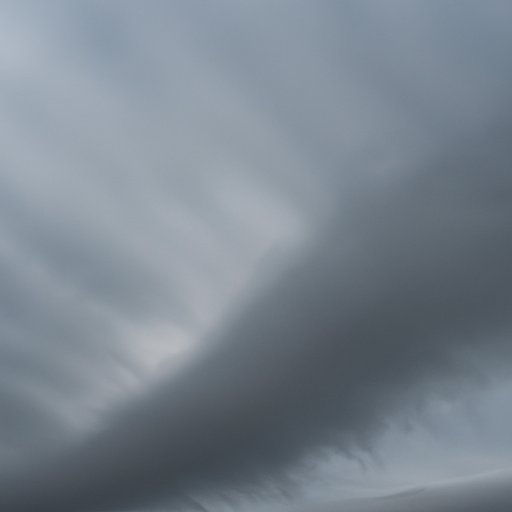
Introduction
Drawing wind can be a challenging yet rewarding experience for artists of all skill levels. Wind can add life and emotions to any piece of art, from a peaceful scene of trees swaying in a gentle breeze to dramatic weather phenomena like hurricanes and tornadoes. In this article, we’ll cover various aspects of drawing wind, such as techniques to convey movement, step-by-step guidelines for drawing wind, using wind to add mood to drawings, drawing outdoor scenes that incorporates wind, and advanced techniques for drawing weather phenomena.
The Magic of Movement: Tips for Capturing Wind in Your Drawings
Movement is the key to drawing convincing wind in your artwork. Without movement, wind can appear static and lifeless. Some tips for capturing wind movement include using curved lines to suggest the flow of wind, varying your line weights to show gusts and swirls, and experimenting with the direction and length of the lines to add dynamism to your piece. It’s also essential to observe real-life wind movements, whether it’s leaves rustling or hair blowing in the breeze, and use those observations to inform your artwork. Experiment with different line styles to see what works best for conveying wind movement.
Blowing Life into Your Artwork: A Step-by-Step Guide to Drawing Wind
Drawing wind can be a daunting task, especially if you’re just starting. However, by following certain techniques and guidelines, you’ll be able to draw wind accurately and with greater ease. Start by selecting the appropriate drawing tools, such as graphite pencils and charcoal sticks, then make rough sketches to establish the flow and direction of the wind in the piece. Keep your strokes light and fluid to suggest movement. As you work, pay attention to the smallest details, like how the wind affects individual objects. Gradually layer on more details and textures, and ensure that you’re consistent in your marks and line weights. At the final stages, add color if you’d like, or keep it monochrome for a more minimalist look.
The Power of Suggestion: Using Wind to Add Mood to Your Drawings
Drawing wind is not just about creating a realistic depiction of wind movement; it’s also about using wind to evoke certain moods and emotions in your artwork. Wind can convey feelings of serenity, audacity, melancholy, and more, depending on how you use it. To depict a peaceful scene, use light, airy strokes, while for a dramatic scene, use heavier and more intense lines. The direction of the wind across the scene can also be critical in establishing mood and atmosphere. For example, a gust blowing against a character’s face can suggest a sense of danger, while a gentle breeze can imply calm.
From Sketch to Reality: How to Bring Windy Scenes to Life on Paper
Drawing outdoor scenes that incorporate wind can be a fun and creative challenge. To draw landscapes that feature wind, pay attention to how different objects move in the wind, such as grass, leaves, and branches. Ensure that each element in the scene is affected by the wind in a way that makes sense in terms of physics. For example, the grass closest to the ground will move less than the grass higher up, and the leaves on a tree will move more than the trunk itself. Pay attention to the direction and speed of the wind, and how it interacts with other elements in the scene, such as the sky or bodies of water.
Beyond the Basics: Advanced Techniques for Drawing Wind and Weather Phenomena
For more advanced artists, drawing more extreme weather phenomena can be a fun and creative challenge. Techniques like experimenting with color and texture can be useful in depicting harsh weather like tornadoes and hurricanes. For instance, the use of dark, stormy colors and bold, jagged strokes can suggest the intensity of such phenomena. Always start with a rough sketch, then gradually build up the piece while paying attention to small details such as the direction of the wind, the shapes of the clouds, and the light and shadow across the scene.
Conclusion
Drawing wind can be a daunting task, but it’s a challenge worth taking on, whether you’re a beginner or an advanced artist. Incorporating wind movement and details into your artwork can add a sense of realism and depth that can’t be achieved in static pieces. As an artist, take time to observe the wind and its movement, experiment with different line styles and weights, and don’t be afraid to use wind to evoke different moods in your art. With practice, you’ll be able to capture the magic of wind in your drawings and bring life to your art.





